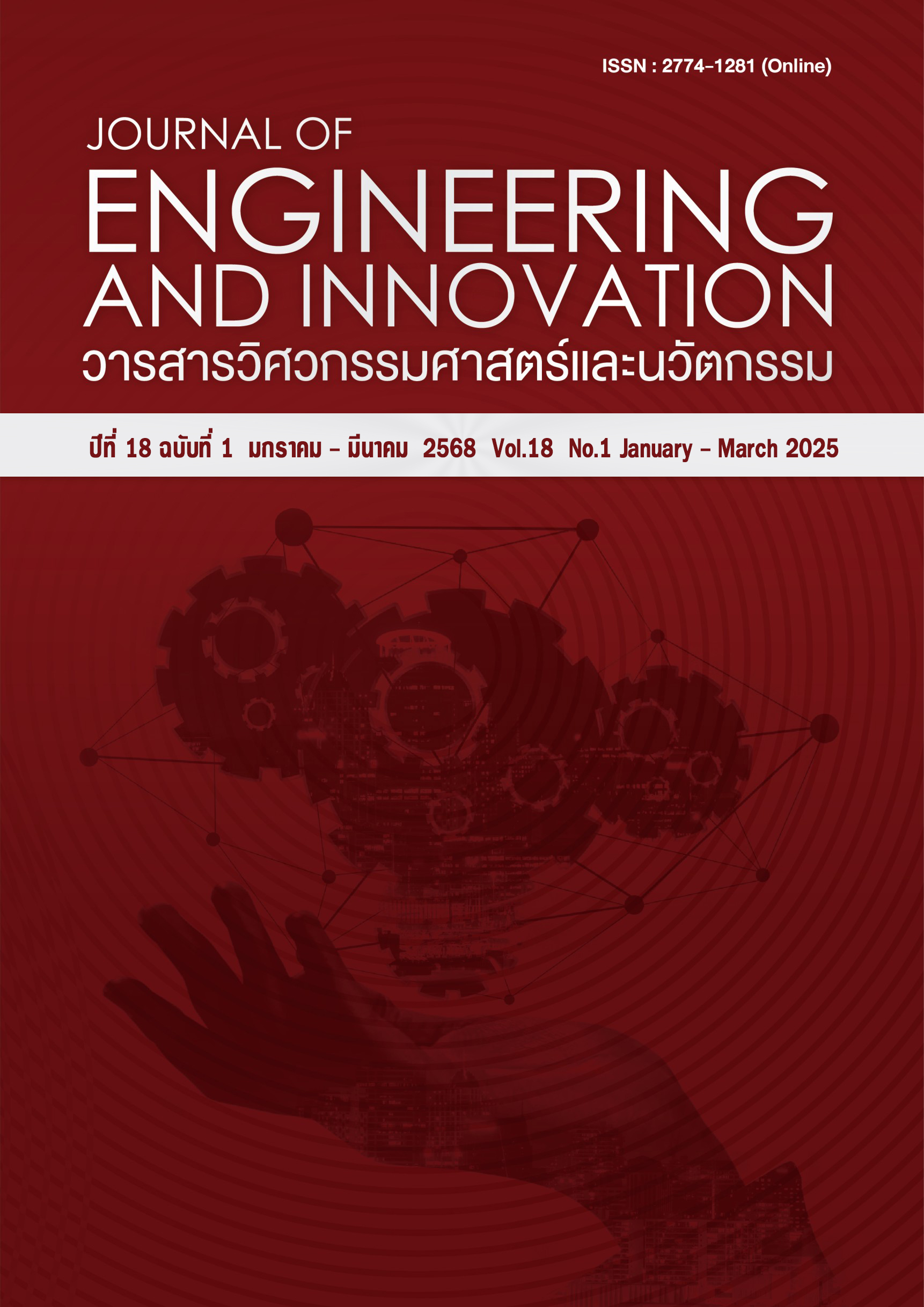Corrosion analysis of low alloy steel subjected to a simulated SO2-containing atmosphere
Main Article Content
Abstract
This article aims to analyze the corrosion process of low alloy steel exposed to a simulated SO2-containing atmosphere. In this study, the corrosion thickness loss was monitored to investigate the corrosion process of low alloy steel and then the linear fitting technique was then applied to obtain the kinetics of the corrosion process. Rust morphologies and rust constituents were examined using scanning electron microscopy (SEM) and x-ray diffraction (XRD). The results showed that corrosion process of low alloy steel exposed to the simulated SO2-containing atmosphere consists of two sub-processes: accelerating and decelerating process. The difference in rust morphologies and the rust phases between two sub-processes was obvious. The nonprotective rust with unstable rust constituents was found in the first sub-process. As the corrosion process proceeded, the rust became more stable and protective. The thick rust composed of the stable rust constituents formed on low alloy steel provided the retarding effect to the diffusion of sulphate ions and thereby decreasing the corrosion rate of this steel experiencing the simulated SO2-containing atmosphere. atmosphere.
Article Details
References
Jia J, Wu W, Cheng X, Zhao J. Ni-advanced weathering steels in Maldives for two years: Corrosion results of tropical marine field test. Construction and Building Material.2020; 245:118463.
Peeratatsuwan C, Kanjanangkoonpan S, Reabroy R, Chowwanonthapunya T. Thermodynamic investigation on corrosion of Cu-bearing steel in aqueous Solutions. Pathumwan Academic Journal.2023;12(33):16-26.
Misawa T. The Thermodynamic consideration For Fe-H2O System at 25 oC. Corrosion Science.1973;13(9):659-676.
Emetere ME, Afolalu AS, Amusan L, Angela M. Role of atmospheric aerosol content on atmospheric corrosion of metallic materials. International Journal of Corrosion.2021;2021: 6637499.
Winston RW, Herbert Uhlig HH . An Introduction to Corrosion Science and Engineering. New Jersey: John Wiley& Sons, Inc.;1994.
Chowwanonthapunya T. Fundamentals of Corrosion Engineering. Chiangmai : Chiangmai University Press; 2022.
Jia Y, You C, Gao Y, Zhou Y, Liu M, Wang H. Atmospheric corrosion resistance of weathering angle steels in a simulated industrial atmosphere. Journal of Materials Engineering and Performance.2020;29:1225-1534.
Hao L, Zhang S, Dong J, Ke W. Evolution of atmospheric corrosion of MnCuP weathering steel in a simulated coastal-industrial atmosphere. Corrosion Science.2012;59:270-276.
Thee C, Hao L, Dong J, Wie X, Li XF, Ke W, Ke W. Atmospheric corrosion monitoring of a weathering under an electrolyte film in cyclic wet -dry condition. Corrosion Science. 2014;78:130-137.
Fan Y, Liu W, Li S, Chowwanonthapunya T, Wongpat B, Zhao Y, et al. Evolution of rust layers on carbon steel and weathering steel in high humidity and heat marine atmospheric corrosion. Corrosion Science. 2020;39:190-199.
Dong JH, Han E, Ke W. Introduction to atmospheric corrosion research in China. Science and Technology of Advanced Materials. 2007;8(7-8):559-565.
Wang Z, Wang M, Jiang J. Lan X, Wang F, Geng Z, Tian Q. Atmospheric corrosion analysis and rust evolution research of Q235 carbon steel at different exposure stages in Chengdu atmospheric environment of China. Scanning. 2020;8: Article ID 9591516
Cheng X, Jin Z, Liu M, Li X. Optimizing the nickel content in weathering steels to enhance their corrosion resistance in acidic atmospheres. Corrosion Science. 2021;2: 82-90.
Chowwanonthapunya T, Study on anti-atmospheric corrosion performance of steel in coastal and urban atmospheres in Thailand. Journal of Materials Science and Applied Energy. 2016;5(3): 61-65.
.

